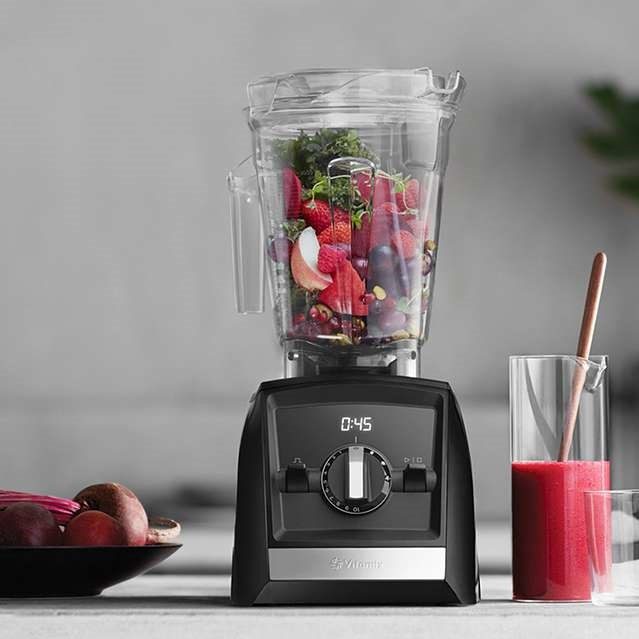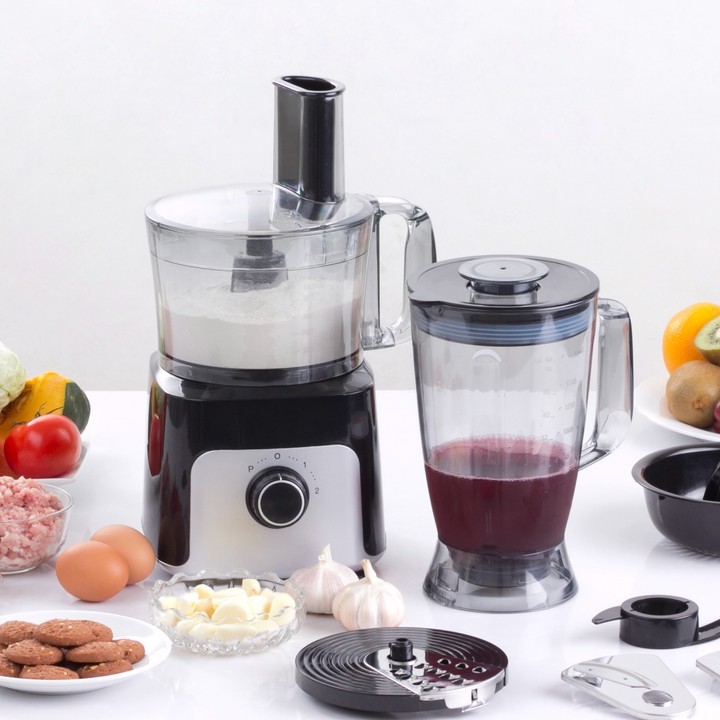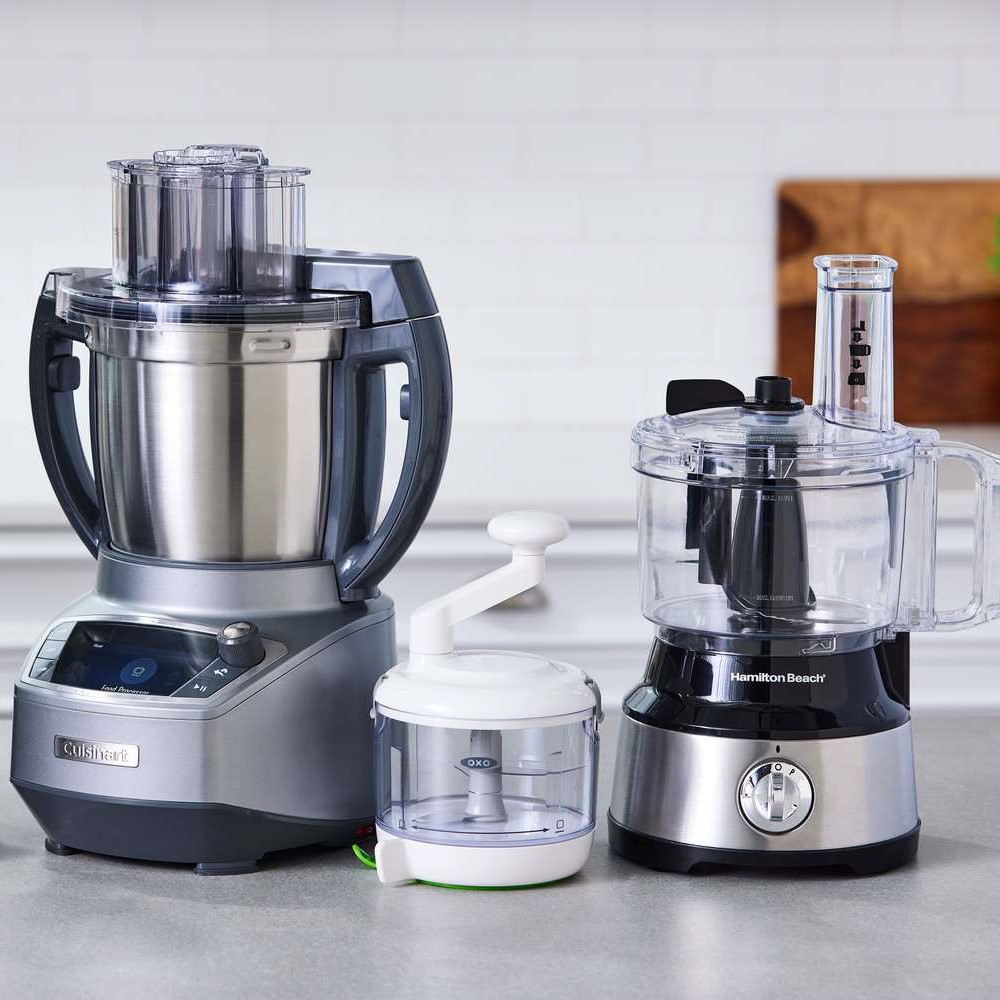
In today’s fast-paced kitchen environments, versatility and efficiency of appliances are paramount. One common dilemma many home cooks face is whether they can use a blender instead of a food processor. Both appliances are staples in modern kitchens, each with its distinct functionalities and advantages. Understanding whether a blender can effectively replace a food processor can help streamline meal preparations and optimize kitchen space. This comprehensive guide delves into the capabilities, limitations, and practical tips for using a blender in place of a food processor.
Understanding the Differences Between Blenders and Food Processors
Before determining if a blender can substitute a food processor, it’s essential to understand the fundamental differences between these two appliances.
Design and Functionality
Blenders are typically designed with tall, narrow containers and fixed blades at the bottom. They excel in creating smooth liquids and purees, making them ideal for beverages like smoothies, soups, and sauces. Blenders often come with multiple speed settings and sometimes pulse functions, allowing for control over the texture of the blended ingredients.
Food processors, on the other hand, feature wider, more versatile bowls with various interchangeable blades and attachments. This design allows for a broad range of tasks beyond pureeing—such as chopping, slicing, shredding, and kneading dough. The versatility of a food processor stems from its ability to handle both dry and wet ingredients, making it a more flexible tool for diverse culinary tasks.
Common Uses and Applications
Blenders are primarily used for tasks that require smooth, liquid-based blends. They excel in making beverages, purees, and emulsions. Blenders are also adept at incorporating liquids into mixtures, making them suitable for dressings, smoothies, and pureed soups.
Food processors are more versatile and can handle tasks that require different textures and consistencies. They are excellent for chopping vegetables, grinding nuts, shredding cheese, and even kneading dough for bread and pastries. The multiple attachments and blade types enhance a food processor’s ability to perform a wide array of kitchen tasks, from preparing ingredients to creating complex dishes.
Situations Where a Blender Can Replace a Food Processor
While blenders and food processors have their distinct uses, there are specific scenarios where a blender can effectively replace a food processor.
Liquid-Based Preparations
When the recipe primarily involves liquid-based ingredients, such as smoothies, soups, sauces, and purees, a blender can seamlessly take over the role of a food processor.
Simple Purees and Smooth Blends
For tasks that require simple pureeing or smooth blending, blenders are more than capable of handling the job. Whether you’re making baby food, blending fruit for a dessert, or creating a smooth hummus dip, a blender can achieve the desired consistency without any issues. The powerful motor and high-speed blades of a blender ensure that ingredients are thoroughly blended to a smooth texture, making it a viable alternative for such specific tasks.
Limitations of Using a Blender in Place of a Food Processor
Despite their capabilities, blenders have limitations that can hinder their ability to fully replace a food processor in certain tasks.
Texture and Consistency Challenges
One of the primary limitations of using a blender instead of a food processor is the challenge in achieving the desired texture and consistency for certain recipes. Blenders excel at creating smooth, liquid textures but struggle with tasks that require varied textures, such as chopping vegetables or grinding nuts to a coarse consistency. Achieving a similar texture to what a food processor can provide often requires additional effort and multiple blending cycles, which can be time-consuming and less efficient.
Cutting and Shredding Tasks
Blenders are not designed for cutting, slicing, or shredding tasks. Food processors come equipped with specific blades and attachments that make these tasks straightforward and efficient. For example, shredding cheese, slicing vegetables thinly, or chopping nuts into precise pieces are tasks that a blender cannot handle effectively. Attempting to perform these tasks with a blender can result in uneven cuts and a messy process, highlighting the limitations of using a blender as a direct substitute for a food processor in these scenarios.
Tips for Successfully Using a Blender as a Food Processor
If you decide to use a blender in place of a food processor, certain tips can help you achieve better results and mitigate some of the limitations.
Choosing the Right Blender
Not all blenders are created equal. To maximize the potential of using a blender as a food processor, opt for a high-powered blender with multiple speed settings and a pulse function. Blenders with a wider base or those designed for multi-purpose use, such as countertop blenders with sufficient capacity, will perform better in handling a variety of tasks. Additionally, look for blenders with sturdy blades and robust motors to handle tougher ingredients more effectively.
Adjusting Techniques and Settings
When using a blender for tasks typically handled by a food processor, adjusting your blending techniques and settings can lead to better outcomes. For chopping or pulsing ingredients, use the pulse function to control the size and texture of the food, avoiding over-blending. It’s also helpful to blend in smaller batches to ensure even processing and prevent strain on the blender motor. Adding a small amount of liquid can facilitate smoother blending and help achieve a more uniform consistency.
Comparing Versatility and Efficiency
While blenders can perform certain tasks of a food processor, it’s important to weigh their versatility and efficiency against that of food processors.
Time and Effort Considerations
Using a blender as a food processor can often require more time and effort to achieve the desired results. For example, tasks like chopping vegetables or grinding nuts may need to be repeated multiple times to reach the required consistency. In contrast, a food processor is designed to perform these tasks quickly and consistently with minimal intervention. Therefore, while a blender can substitute in some cases, a food processor remains more efficient for varied and complex kitchen tasks.
Cleaning and Maintenance Differences
Cleaning is another factor to consider when comparing blenders and food processors. Blenders typically have fewer parts to clean, making the process straightforward. However, the narrow containers of blenders can be challenging to clean thoroughly, especially when dealing with sticky or chunky ingredients. Food processors, with their multiple attachments and wider bowls, may require more effort to clean but are generally easier to handle when it comes to diverse culinary tasks. Each appliance has its own maintenance requirements, and the ease of cleaning can influence your decision on whether to use a blender instead of a food processor.
Cost and Space Considerations
When deciding whether to use a blender instead of a food processor, cost and kitchen space are important factors to consider.
Budget-Friendly Options
Blenders and food processors come in a wide range of prices, depending on their features and brands. Blenders can be a more budget-friendly option, especially if you already use them for multiple tasks like making smoothies, soups, and purees. Investing in a high-quality blender with versatile functionalities can potentially eliminate the need for a separate food processor, saving you money in the long run.
Kitchen Space and Storage
Kitchen space is often limited, especially in small apartments or homes. Opting to use a blender instead of a food processor can save valuable counter and storage space. Blenders typically have a more compact footprint compared to food processors, which often require additional storage for their multiple attachments and bowls. By relying on a blender for multiple tasks, you can streamline your kitchen setup and reduce clutter, making your cooking space more efficient and organized.
 Health and Nutrition Benefits
Health and Nutrition Benefits
Choosing the right appliance can also impact the nutritional quality of your food. Let’s explore how using a blender instead of a food processor can influence your diet.
Preserving Nutrients
Blenders are excellent at breaking down fruits and vegetables into smooth purees, which can help in preserving the nutrients by minimizing oxidation. Smoothies and pureed soups made with a blender retain most of the vitamins, minerals, and antioxidants present in the raw ingredients, providing a nutrient-dense option for your diet.
Controlling Ingredients
Using a blender allows for greater control over the ingredients you incorporate into your meals. This can lead to healthier meal options by enabling you to avoid additives and preservatives often found in store-bought processed foods. When using a blender instead of a food processor, you can create fresh, wholesome meals tailored to your dietary preferences and nutritional needs, promoting a healthier lifestyle.
Conclusion: Making the Right Choice for Your Kitchen Needs
In conclusion, the question of whether you can use a blender instead of a food processor depends largely on your specific kitchen needs and the types of tasks you frequently perform. While blenders excel in liquid-based preparations and simple purees, they have limitations when it comes to tasks like chopping, slicing, and shredding. Understanding these differences and knowing how to adjust your techniques can help you effectively use a blender in place of a food processor for many applications.







